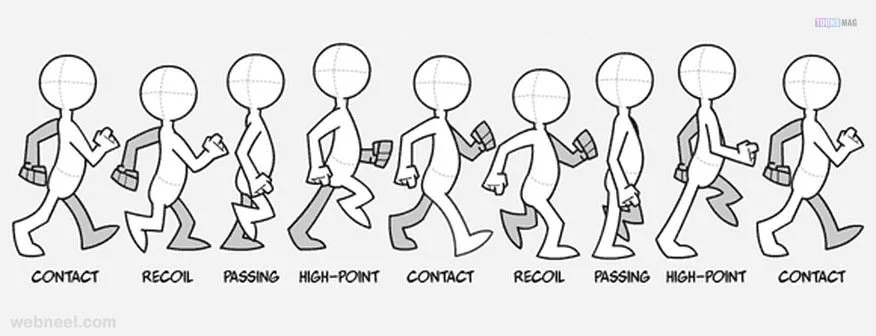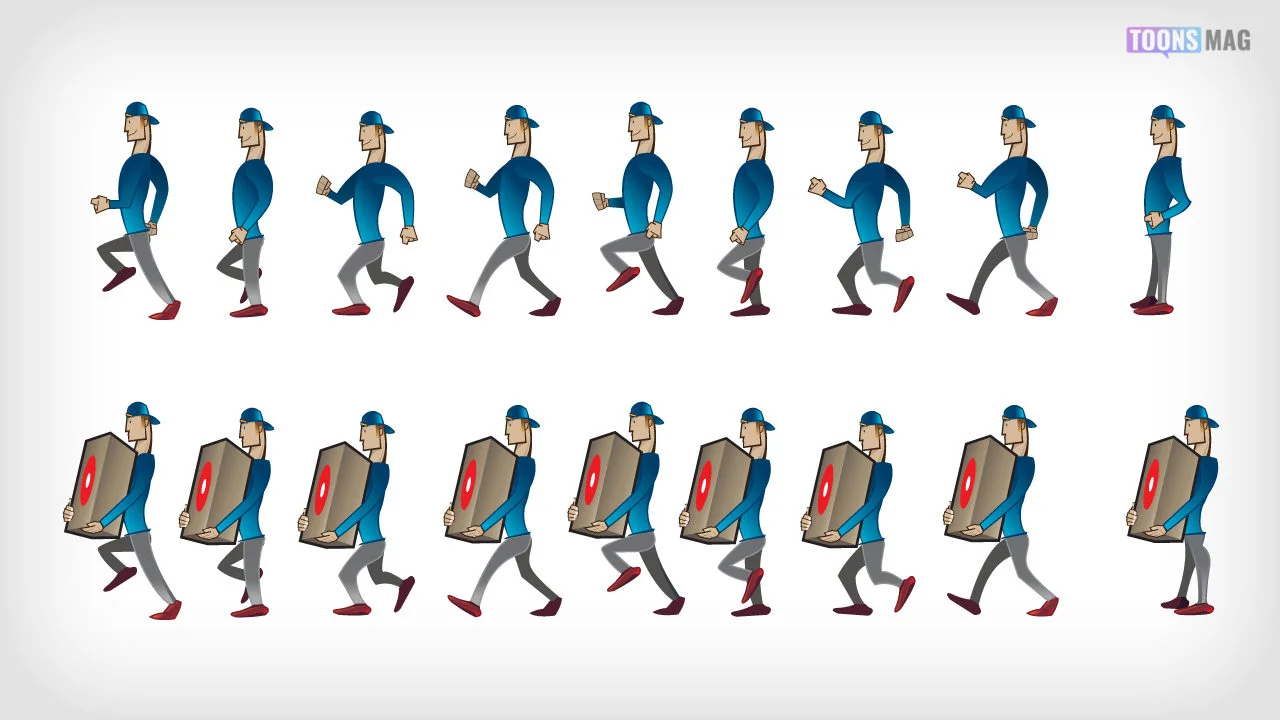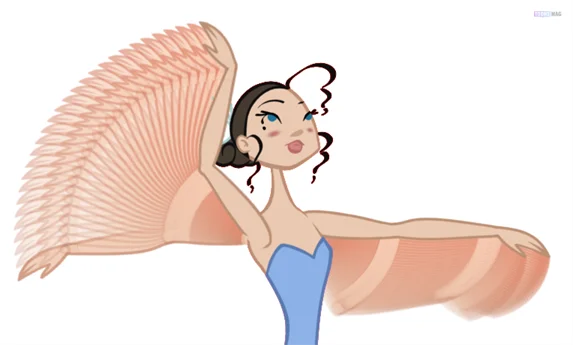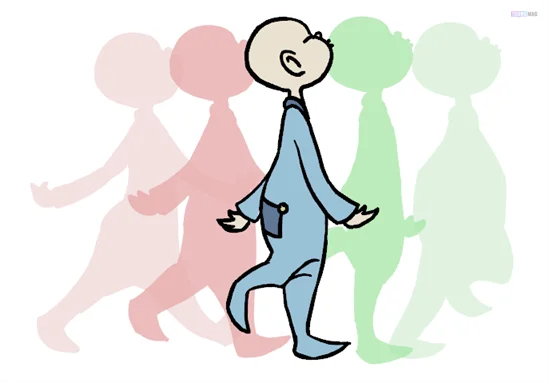What is Animation?: Animation is the art of bringing images to life, creating the illusion of movement by displaying a sequence of frames or drawings in rapid succession. It’s a unique form of storytelling that combines artistry and technology, captivating audiences through motion, character, and emotion. From classic hand-drawn cartoons to today’s high-tech computer-generated imagery (CGI), animation has grown into a powerful medium that spans entertainment, education, marketing, and beyond. For anyone curious about animation, understanding the basics can open the door to appreciating this incredible art form and even exploring it creatively.

Defining Animation: More Than Moving Pictures
At its core, animation is about making still images appear to move. By creating a series of images that show progressive changes, animators trick the eye into perceiving continuous motion. This phenomenon, known as persistence of vision, is the basis of animation. Our brains retain an image for a fraction of a second after seeing it, so when similar images are shown in rapid succession, they blend into a fluid motion.
Key Elements of Animation:
- Frames: Each individual image in an animated sequence is called a frame.
- Frame Rate: This refers to the number of frames displayed per second. The standard rate for fluid animation is 24 frames per second.
- Movement and Timing: The speed and smoothness of an animation depend on the spacing and timing of the frames.
Example: If you draw a character in slightly different positions on 24 pages and then flip through them quickly, you’ll see the character moving in an animated way. This principle is the foundation of all types of animation.
Personal Insight: I love how animation can turn static images into something that feels alive. It’s like watching a character come to life, which brings a special magic to storytelling.

Types of Animation
Animation comes in many styles and techniques, each with its own unique process and visual appeal. Here are some of the most popular types of animation.
1. Traditional Animation (Hand-Drawn)
Traditional animation, also known as hand-drawn animation, is the oldest form of animation. Animators draw each frame by hand, usually on paper or cells, to create movement. These drawings are then photographed and projected in rapid succession. This technique was used in classic animated films like Snow White and the Seven Dwarfs and Bambi.
Characteristics:
- Labor-Intensive: Each frame is drawn by hand, requiring high levels of skill and time.
- Classic Look: Traditional animation has a distinctive, organic feel due to the hand-drawn quality.
Example: The Looney Tunes cartoons were created using traditional animation, bringing characters like Bugs Bunny and Daffy Duck to life with expressive and fluid movements.
Personal Insight: Traditional animation has a charm and warmth that’s hard to replicate. It feels deeply personal because you can see the artist’s hand in each drawing, making it one of my favorite animation styles.

2. 2D Digital Animation
2D digital animation is similar to traditional animation, but instead of drawing on paper, animators use digital tools like Adobe Animate or Toon Boom. This allows for easier editing, faster production, and more complex visuals, as animators can add layers, effects, and colors directly on the computer.
Characteristics:
- Efficient Workflow: Digital tools make it easier to edit and create, reducing production time.
- Versatile Style: Can mimic traditional animation or create new, modern looks.
Example: Animated TV shows like The Simpsons and Bob’s Burgers are created using 2D digital animation, combining traditional character design with digital techniques for efficient production.
Personal Insight: Digital animation blends the old and new, allowing for the creativity of hand-drawn animation with the efficiency of digital technology. It’s amazing how quickly artists can bring scenes to life with these tools.
3. 3D Animation (CGI)
3D animation, or computer-generated imagery (CGI), uses 3D models created on a computer to produce lifelike or stylized animations. Animators build characters and scenes in a 3D space, then move and manipulate them for each frame. This technique is commonly used in movies, video games, and virtual reality experiences.
Characteristics:
- Realistic Depth and Texture: 3D animation allows for realistic lighting, shading, and texture, creating a sense of depth.
- Flexible Movement: Characters can move freely in three-dimensional space, allowing for complex motion.
Example: Films like Toy Story and Frozen are iconic examples of 3D animation, featuring characters with highly detailed textures and smooth, realistic movements.
Personal Insight: 3D animation feels like sculpting in a digital space, giving a sense of realism and immersion that’s unique to this style. It’s impressive to see how far technology has come, creating animated worlds that feel almost tangible.

4. Stop Motion Animation
Stop motion animation involves capturing real objects one frame at a time, with slight adjustments made to the object’s position between each frame. When the frames are played back in sequence, the object appears to move. Stop motion is often used with clay figures, puppets, or even household items to create a whimsical, handmade feel.
Characteristics:
- Tactile Look and Feel: Stop motion has a unique, tangible quality, as it uses real objects.
- Time-Intensive: Each movement must be created manually, making it labor-intensive but rewarding.
Example: Films like The Nightmare Before Christmas and Wallace and Gromit use stop motion to bring characters to life with a distinct and charming style.
Personal Insight: Stop motion has a wonderful, handcrafted feel. It’s incredible to think about the patience and precision needed to move each object or character frame by frame.
5. Motion Graphics
Motion graphics involve animated graphics and text, often used in commercials, title sequences, or informational videos. While it’s less character-focused, motion graphics add movement to otherwise static visuals, making information more engaging and visually dynamic.
Characteristics:
- Clean and Minimalist Style: Focuses on text and graphic elements rather than characters.
- Informational Focus: Often used for advertising, tutorials, or presentations.
Example: Motion graphics are commonly seen in logo animations, explainer videos, and the opening credits of movies or TV shows.
Personal Insight: Motion graphics are incredibly versatile for visual storytelling, combining information with creative visuals in an engaging way. They’re perfect for quick, eye-catching animations that tell a story without words.

The Basic Principles of Animation
Whether traditional or digital, all forms of animation rely on fundamental principles to create convincing motion and expressions. Here are some core principles that help animators bring characters and scenes to life:
1. Squash and Stretch
This principle gives objects and characters a sense of weight and flexibility. For example, when a character jumps, their body stretches, and when they land, it squashes. This adds energy to movements and makes the animation feel more lifelike.
2. Anticipation
Anticipation involves setting up an action before it happens, like a character winding up before throwing a ball. It prepares the audience for what’s coming next, making the animation feel smooth and engaging.
3. Timing and Spacing
The speed and spacing of frames affect the motion’s timing, making it fast, slow, or natural. For example, fewer frames make the action seem fast, while more frames make it slower and smoother.
4. Exaggeration
Exaggeration amplifies expressions and movements, adding drama and impact. It’s a key part of cartooning, helping to make emotions and actions more expressive.
5. Follow-Through and Overlapping Action
This principle means that different parts of a character move at different speeds, creating a realistic flow of movement. For example, if a character stops running, their hair or clothing might continue moving for a moment.
Example: Disney’s classic animations are known for their use of these principles, creating characters that feel lively and expressive.
Personal Insight: Learning these principles helped me understand how to make characters feel realistic and relatable. By applying principles like squash and stretch or timing, I’m able to add energy and emotion to my work.

Why Animation Is So Popular Today
Animation’s versatility and accessibility have made it a popular form of entertainment and communication across various platforms. From streaming services to social media, animation connects with people of all ages, conveying stories, information, and emotions in ways that resonate universally. It combines visual appeal with storytelling, making it a powerful medium for capturing attention and evoking feelings.
Reasons for Animation’s Popularity:
- Wide Appeal: Animation is enjoyed by children and adults alike, bridging age and cultural gaps.
- Limitless Creativity: With animation, there are no boundaries—anything imaginable can be brought to life.
- Effective Communication Tool: Animation simplifies complex ideas, making it ideal for education, marketing, and more.
Example: Platforms like Netflix and YouTube offer animated shows and films across genres, from fantasy and drama to comedy and education, making animation accessible to audiences worldwide.
Personal Insight: Animation’s universal appeal is one of the reasons I’m drawn to it as an artist. It’s inspiring to know that my work can resonate with different people, creating a shared experience through movement and storytelling.

Getting Started with Animation
If you’re interested in trying animation, here are a few steps to get started:
- Choose Your Medium: Decide whether you want to work with traditional, digital, 3D, or stop motion animation. Start with a style that feels most accessible to you.
- Learn Basic Principles: Understanding principles like squash and stretch, timing, and anticipation will help you create smooth, expressive animations.
- Experiment with Simple Movements: Start with basic actions, like a bouncing ball or a waving hand, to get a feel for timing and motion.
- Use Animation Software: Programs like Adobe Animate, Blender, or Procreate for iPad are excellent tools for beginners to explore digital animation.
- Practice Consistently: Animation is a skill that improves with practice, so create small projects regularly to develop your abilities.

Conclusion
Animation is an art form that combines creativity, storytelling, and technology, transforming ideas into dynamic, moving images. From the traditional hand-drawn style to advanced CGI, animation is a world of endless possibilities, offering artists a unique way to express emotions, entertain audiences, and tell stories. Whether you’re watching a classic cartoon or experimenting with digital animation yourself, understanding the basics of animation adds a new level of appreciation to this fascinating craft.

Animator versus Cartoonist: The term cartoon refers historically to one drawing in a print form with a visual or written punch line. Many times the term cartoon is used synonymously with animation. This came from the old days of the Saturday morning “cartoons” which were animated half-hour programs. An animator is not the same as a cartoonist. A cartoonist is an artist who creates a series of one or more panels generally for humor within a publication like a newspaper.
The next level beyond the cartoonist is the comic book or graphic novel. A comic book or graphic novel reaches a whole new level of art and story structure. The art and story within that realm have the added pressure of scrutiny and pacing when the reader has the time to look over each line, view, and appreciate the composition and impact of each image.
Final Thoughts:
As a cartoonist, animation allows me to bring my characters to life in a way that’s deeply fulfilling. The ability to transform drawings into movement is magical, and it’s what makes animation such a powerful and enduring art form.
Call to Action:
For those curious about animation, take the first step and try creating a simple animated sequence. Start with basic shapes or simple characters, and experiment with the principles that make animation so captivating. Share your work or thoughts in the comments, and let’s celebrate the incredible art of animation together!
This post was created with our nice and easy submission form. Create your post!




